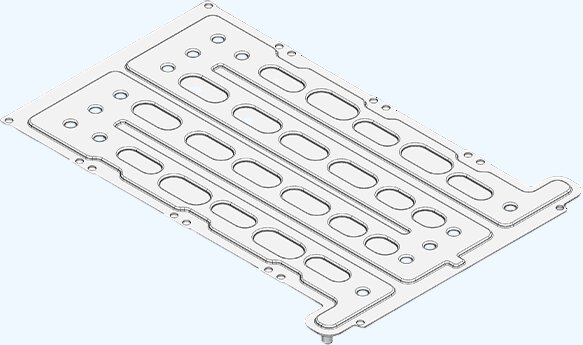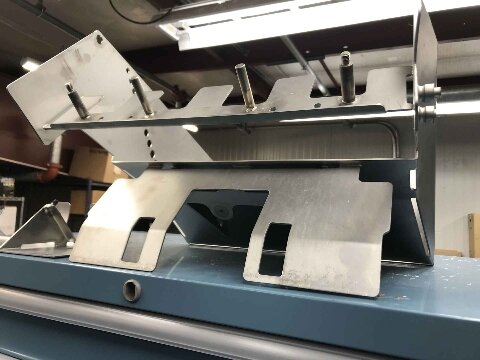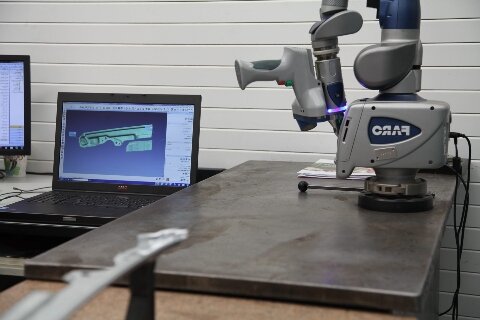Вы ищете надежный способ получения высококачественных и точных результатов обработки? Прецизионная обработка с ЧПУ - идеальный метод для быстрого и точного изготовления деталей. Он обеспечивает превосходную точность и широко используется во многих отраслях промышленности благодаря своей эффективности.
В этой статье мы рассмотрим ключевые аспекты прецизионной обработки с ЧПУ, типы используемых станков и их преимущества для вашего бизнеса. Независимо от того, являетесь ли вы инженером, дизайнером или владельцем малого бизнеса, вы найдете ценную информацию о том, как этот метод может улучшить ваш производственный процесс.
Что такое прецизионная обработка с ЧПУ?
CNC Precision Machining расшифровывается как Computer Numerical Control Machining. Это производственный процесс, в котором запрограммированное компьютерное программное обеспечение управляет движением заводских инструментов и машин. Этот процесс может управлять целым рядом сложных механизмов, от шлифовальных и токарных станков до фрез и фрезерных станков.
Принцип работы станков с ЧПУ заключается в автоматизации. Вместо того чтобы вручную управлять станками, ими управляет компьютер. Это позволяет добиться точных, последовательных и повторяющихся движений. Компьютер выполняет набор инструкций, известный как G-код, который диктует действия станка, например, куда двигаться, с какой скоростью и по какой траектории.
Пошаговое руководство по процессу прецизионной обработки с ЧПУ
Вы когда-нибудь задумывались о том, что входит в процесс создания прецизионной детали? Следуйте этому пошаговому руководству, чтобы понять, как обработка с ЧПУ превращает сырье в высококачественные компоненты.
Шаг 1: проектирование и дизайн
Процесс начинается с создания детального проекта детали с помощью программного обеспечения CAD. Инженеры определяют размеры, формы и особенности детали.
Шаг 2: Программирование в CAM и ЧПУ
После завершения разработки проекта он импортируется в программное обеспечение CAM. Здесь проект преобразуется в G-код - язык, который понимают станки с ЧПУ. Программное обеспечение CAM генерирует траектории движения инструментов, которые направляют станок при резке, сверлении или формовке материала.
Шаг 3: Настройка станка с ЧПУ
Перед началом обработки станок с ЧПУ должен быть настроен. Для этого исходный материал (заготовка) закрепляется на станине станка с помощью зажимов или приспособлений. Выбираются и устанавливаются соответствующие режущие инструменты. Затем станок калибруют, чтобы убедиться, что он точно следует запрограммированным инструкциям.
Шаг 4: Обработка с ЧПУ
После завершения настройки станок с ЧПУ начинает процесс обработки. Следуя инструкциям G-кода, он вырезает, сверлит или придает форму заготовке. Станок перемещает инструменты по запрограммированным траекториям, снимая материал слой за слоем.
Шаг 5: Постобработка и отделка
После обработки детали могут потребоваться дополнительные действия, чтобы она соответствовала окончательным спецификациям. К ним могут относиться удаление заусенцев, полировкаили нанесение на поверхность таких средств, как анодирование или живопись.
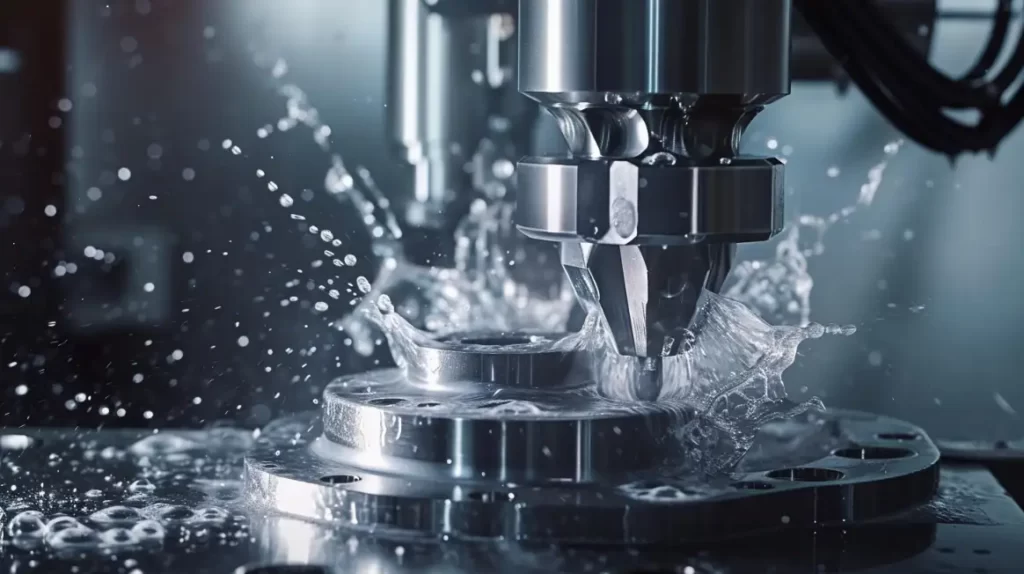
Типы прецизионных станков с ЧПУ
Понимание различных типов станки с ЧПУ является ключом к выбору правильного станка для вашего проекта. Давайте рассмотрим наиболее распространенные станки с ЧПУ.
Фрезерные станки с ЧПУ
Фрезерные станки с ЧПУ используют вращающиеся инструменты для удаления материала с заготовки. Станок может перемещать инструмент или материал в нескольких направлениях. Это позволяет ему создавать сложные формы и элементы. Фрезерование с ЧПУ отличается высокой универсальностью и обеспечивает точные результаты.
Токарные станки с ЧПУ
Токарные станки с ЧПУТокарные станки вращают заготовку, а режущий инструмент придает ей нужную форму. Этот метод идеально подходит для изготовления цилиндрических деталей, таких как валы и шестерни. Токарные станки с ЧПУ известны своей скоростью и точностью.
Сверлильные станки с ЧПУ
Сверлильные станки с ЧПУ Создают отверстия в материалах, вращая сверло. Станок перемещает сверло в заготовке, чтобы сделать точные отверстия. Он обеспечивает точность и повторяемость отверстий.
Электроэрозионные станки (EDM)
EDM Использует электрические искры для придания формы твердым материалам. Машина медленно удаляет материал, формируя нужную форму. EDM идеально подходит для изготовления деталей с замысловатыми элементами или из жестких материалов.
Станки плазменной резки с ЧПУ
Станки плазменной резки с ЧПУ используют плазменный резак для резки металлов. Машина следует по точной траектории резки, управляемой системой ЧПУ. Плазменная резка отлично подходит для резки толстых металлов и создания крупных деталей.
Прецизионные шлифовальные станки с ЧПУ
Прецизионное шлифование с ЧПУ Станки используют абразивные круги для шлифовки и отделки деталей. Станок снимает небольшое количество материала, чтобы получить гладкую поверхность. Шлифовальные станки с ЧПУ используются, когда детали требуют тонкой обработки.
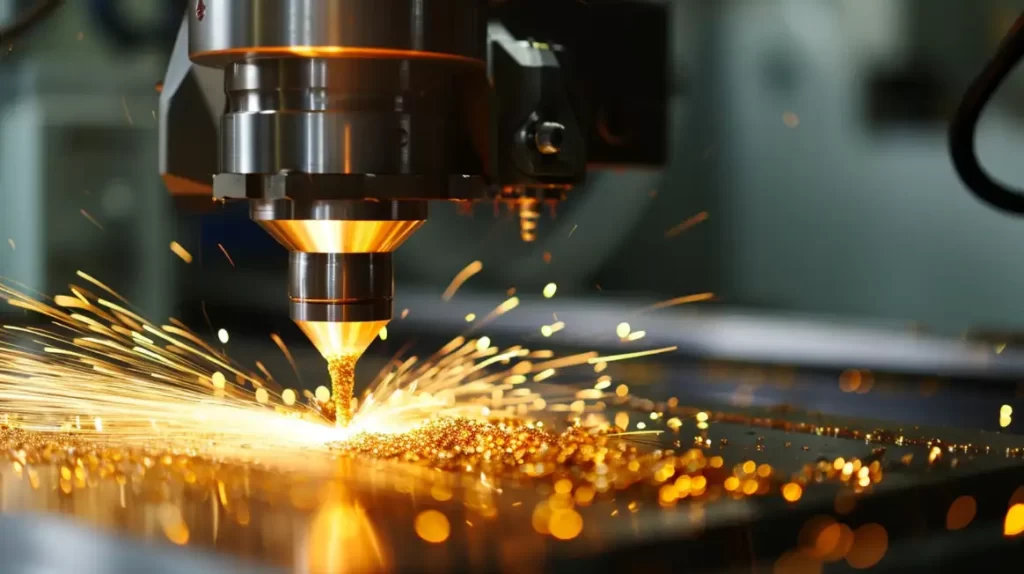
Ключевые преимущества прецизионной обработки с ЧПУ
Прецизионная обработка с ЧПУ обладает рядом ключевых преимуществ, которые могут улучшить ваш производственный процесс. Давайте рассмотрим, как она обеспечивает высокую точность, ускорение производства и надежное качество деталей.
Высокая точность и точность
Прецизионная обработка с ЧПУ обеспечивает высокую точность. Станок выполняет точные инструкции компьютера, что снижает количество ошибок, допускаемых человеком. В результате каждый раз получаются детали, идеально соответствующие проекту.
Ускоренные сроки производства
Обработка с ЧПУ ускоряет производство. Как только программа задана, станок может работать без остановки, сокращая время на изготовление каждой детали.
Надежное качество деталей
Обработка с ЧПУ позволяет получать детали с неизменным качеством. Автоматизированный процесс гарантирует, что каждая деталь идентична предыдущей, что снижает риск возникновения дефектов.
Гибкость в производстве
Станки с ЧПУ отличаются высокой гибкостью. Они могут работать со многими материалами и создавать широкий спектр деталей. Нужны ли вам несколько компонентов на заказ или большая партия одной и той же детали, обработка на станках с ЧПУ справится с этой задачей.
Обработка материалов с ЧПУ
Выбор правильного материала имеет решающее значение для успешной обработки на станках с ЧПУ. Давайте рассмотрим наиболее распространенные металлы и пластмассы, используемые в этом процессе, и то, как они влияют на результат вашего проекта.
Металлы
Металлы и сплавы широко используются в обработке с ЧПУ благодаря своей прочности и долговечности. Для обработки этих материалов требуются специальные инструменты, обычно твердосплавные с алмазным напылением, чтобы справиться с их твердостью.
Распространенные металлы, используемые в прецизионной обработке, включают:
- Алюминий: 6061, 7075, 2024
- Сталь: 1018, 4140, 1045, A2, D2
- Нержавеющая сталь: 304, 316, 17-4 PH
- Титан: Ti-6Al-4V
- Медь: C101, C110
- Латунь: C360, C260
- Бронза: C932, C954
- Инконель: 718
- Монель: 400
Пластмассы
Обработка пластика может быть сложной из-за его чувствительности к нагреву. Это замедляет скорость производства по сравнению с металлами. При работе с пластиком обычно используются твердосплавные режущие инструменты.
К числу распространенных пластмасс, используемых при обработке с ЧПУ, относятся:
- Нейлон: 6, 6/6, маслонаполненный нейлон
- АБС
- Поликарбонат (ПК)
- полиэтилен
- Полиоксиметилен (POM) или Ацеталь
- ПТФЭ и наполненный ПТФЭ (стекло, карбон, бронза)
- Кетон полиэфира (PEEK)
- Акрил (PMMA)
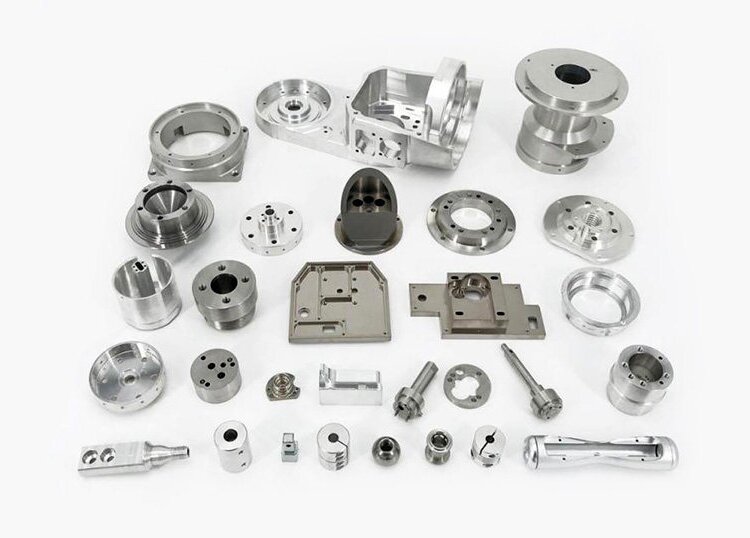
Применение прецизионной обработки с ЧПУ
Прецизионная обработка с ЧПУ необходима во многих отраслях промышленности, обеспечивая точность, необходимую для критически важных компонентов. Давайте рассмотрим, как она помогает отраслям.
Аэрокосмическая промышленность
Прецизионная обработка с ЧПУ играет важную роль в аэрокосмической промышленности. Здесь производятся детали, которые должны соответствовать высоким стандартам безопасности и производительности. Такие компоненты, как детали двигателей, шасси и элементы конструкций, требуют точного изготовления.
Автоматизированная индустрия
В автомобильной промышленности обработка с ЧПУ позволяет создавать компоненты двигателя, детали трансмиссии и нестандартные фитинги. Этот процесс позволяет изготавливать детали сложной формы с жесткими допусками, обеспечивая их идеальную посадку и надежную работу.
Медицинское оборудование
Медицинская промышленность использует обработку с ЧПУ для производства точных и биосовместимых компонентов, таких как хирургические инструменты, имплантаты и диагностическое оборудование. Обычно используются такие материалы, как нержавеющая сталь и пластмассы медицинского класса.
Электроника и товары народного потребления
Обработка с ЧПУ играет ключевую роль в производстве электроники, например компонентов смартфонов, печатных плат и разъемов. Она также используется для создания потребительских товаров, например, корпусов, фурнитуры и декоративных элементов.
Допуски и контроль качества обработки на станках с ЧПУ
Точность - основа обработки с ЧПУ. Давайте узнаем, как достигаются жесткие допуски.
Понимание допусков в системе ЧПУ
Допуски в обработке с ЧПУ означают допустимые отклонения в размерах детали. Жесткие допуски зависят от точности станка, качества инструмента и свойств материала. Современные станки с ЧПУ и квалифицированное программирование и калибровка обеспечивают соответствие деталей этим строгим требованиям.
Как достигаются жесткие допуски:
- Используются высокоточные станки с ЧПУ с улучшенной калибровкой.
- Выберите подходящие режущие инструменты и материалы.
- Оптимизируйте параметры обработки, такие как скорость и подача.
- Регулярно обслуживайте и проверяйте оборудование для обеспечения точности.
Обеспечение качества при обработке на станках с ЧПУ
Контроль качества гарантирует, что каждая деталь соответствует требуемым стандартам. Это включает в себя строгие проверки на каждом этапе процесса обработки.
Методы обеспечения высокого качества результатов:
- Используйте точные измерительные инструменты, такие как штангенциркули и микрометры.
- Проводите проверки в процессе работы, чтобы выявлять ошибки на ранней стадии.
- Проведение окончательных проверок для проверки размеров и отделки деталей.
- Внедрение стандартов ISO и других систем управления качеством.
Заключение
Прецизионная обработка с ЧПУ обеспечивает непревзойденную точность, скорость и гибкость в различных отраслях промышленности. От аэрокосмической промышленности до медицинского оборудования, она обеспечивает высокое качество деталей с жесткими допусками. Предприятия могут добиться надежных и экономически эффективных результатов, выбирая правильные материалы и поддерживая контроль качества.
Готовы вывести свой проект на новый уровень? Связаться с нами сегодня, чтобы получить квалифицированные услуги по обработке на станках с ЧПУ и получить бесплатное предложение!
Привет, я Кевин Ли

Последние 10 лет я занимался различными формами изготовления листового металла и делился здесь интересными идеями из своего опыта работы в различных мастерских.
Связаться

Кевин Ли
У меня более десяти лет профессионального опыта в производстве листового металла, специализирующегося на лазерной резке, гибке, сварке и методах обработки поверхности. Как технический директор Shengen, я стремлюсь решать сложные производственные задачи и внедрять инновации и качество в каждом проекте.

